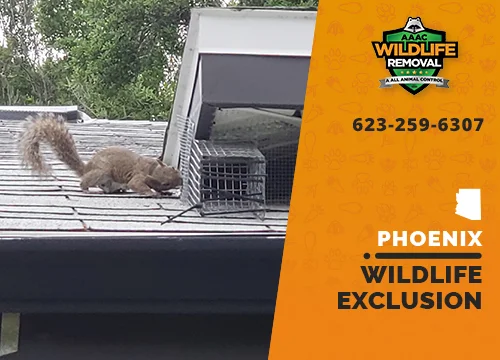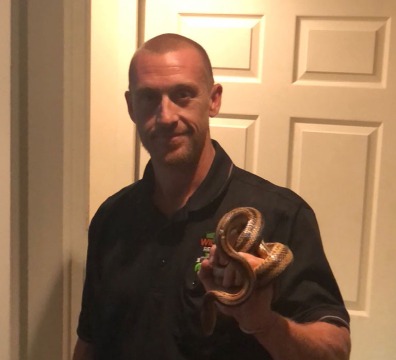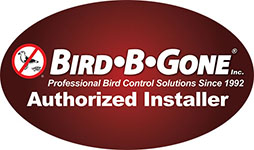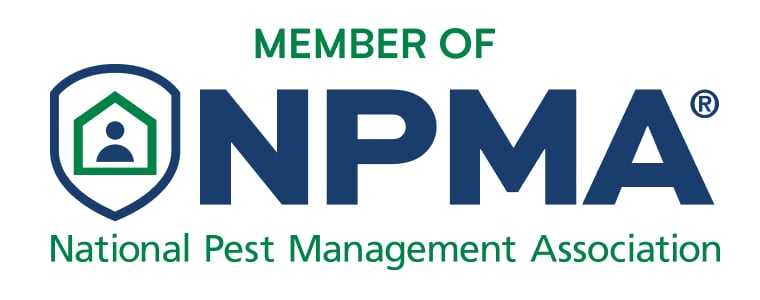
What is Wildlife Exclusion?
Exclusion means sealing off entry points for animals to your home or business in a way that stops them getting in. It’s easier than trying to exclude wildlife on your own since you can do it all at once; for example, if you have rats coming in through the basement, seal off the holes they could come in from.
AAAC Wildlife Exclusion Services provides humane exclusion services for any kind of wildlife that poses a threat to your home or business. We are experts in exclusion and can safely and effectively exclude your problem animals.
We can help if there are animals living underneath your house or inside your walls. We can seal all entry points for animals that we find. This includes holes in floors and cement cracks around pipes.
How We Conduct Wildlife Control and Exclusion Services
Some nuisance wildlife has managed to sneak into your home or office. Now you want to trap them, and maybe even get rid of them. However, trapping alone won’t fix your problem. Although you may be able to eliminate the first infestation, if you don’t do wildlife exclusion, you can only wait for the next group to arrive. Here are the steps taken to stop the infesting cycle using animal removal techniques.
Find and seal all entry points:
We need to find all possible entry points for animals. This might include holes in floors, cement cracks around pipes – basically anywhere an animal might find entry into your home or business. This can also include holes in roof shingles, roof flashing, and eaves. These access points are then blocked off. Sometimes we can achieve this by drilling metal or rubber grommets onto the hole. This also seals the area. For other situations, wire mesh can be used as a plug to cover the holes. Our third step is to add a weatherproof cover over your blocked-off hole so it can protect any openings from rain, snow, and wind. We must also wait to see whether there are any other openings that could allow animals to get into the building and seal them off too.
Exclude wildlife using a trap or one-way door
Pest control professionals will usually locate the main entrance wild animals use to enter your home or workplace. We deliberately leave this gap open so we can properly eliminate nuisance wildlife. Once we’ve identified it, we can use either a live trap or a one-way door.

One-way doors: For those who don’t wish to kill the animal, a one-way door can be a good choice. These doors are specifically designed for animals that allow them to enter but not go. To use one of these, we carefully open a hole in the door that is just big enough for the animal to fit through but too small to turn around and come back out of. Then we place some bait on the other side of the hole, close it, and wait for the animal to go in. Once they head towards the bait it will be impossible for them to turn back and leave because they can’t open the door from this side!

Live traps: If you want to use live traps, set traps next to any openings outside or on the roof that animals might use. To lure them into our trap, we place the traps near the openings. Once they’re caught, we won’t have to deal or see them. Once an animal has entered the trap, it’s caught! A cage trap may be necessary if the wildlife being trapped is larger like a raccoon or an opossum. It is a wire mesh trapping device that keeps the animal inside. Then technicians from our wildlife removal firm will take it out of your home.
Popular Access Points for Animal Entry
To prevent future wildlife infestations, a proper wildlife pest control service operator must check all of the most common ways that squirrels, rodents, bats, rats, mice, raccoons, birds, and other wildlife can use to access your home. AAAC Wildlife Removal is very thorough, but here is a quick list of the most popular access points that animals use to get inside your home.

Ridge Vents
Bats commonly enter attics through the Roof Ridge Vent. This is a narrow metal strip that runs along one side of the roof. Ridge Guard can be used to close any openings on the vent side. Once the vents are sealed, we can do a complete roof repair to make sure your house is animal-proof. If you have photos of your roof, it will help us determine if there are any critters getting into your ridge vents.

Gable Vents
Gable vents on many homes are a common entry point for wildlife, including squirrels and raccoons. These vents allow airflow in hot weather. They can be screened or have a flap that can be opened with the animal’s paw. We can secure these vents with a wire mesh. This allows for airflow but does not allow animals to enter. We can also secure the vent flaps and replace any rotted wood that may have allowed an opening for critters to enter in the first place.

Dryer Vents
Dryer vents offer rodents and birds a convenient entry-point. Rodents can often chew through dryer vents to get into your home, especially if they’re migrating between buildings in search of food or shelter. The dryer vents allow airflow through and keep the birds alive. This is why it’s so important to cover these vents with metal mesh and seal all openings.
Birds love dryer vents because of the warmth that is moving through them. Your electricity bill may increase or decrease as dryer vents are used by birds to access their nest. Installing common vent guards is the best preventative measure for this problem.

Soffit
Squirrels and raccoons love to enter your attic through damaged soffits. An expert wildlife removal service will replace any rotten wood that may be allowing wildlife in and then seal the openings with closures or metal wire mesh. Your soffit is guaranteed to look new and your rodent family gone.

Fascia
Another favorite spot for wild animals is the fascia on the house. If you have gutters, the fascia would be under the gutter at your roof’s edge. It is a board that covers the gap between your roof edge and your gutters. We secure the gaps with metal mesh and remove any rotted wood. Then, we cover it with a metal cover. This prevents wildlife from accessing this area.

Eaves
Raccoons love to get into your home through the eaves. The edges of your roof that meet the sides of the house are called eaves. To keep wildlife out, our technicians can use metal mesh to close any gaps. Or, we can install special guards that prevent animals from entering.

The Chimney
One of the most common ways that animals enter a home is through the chimney. We can either use chimney caps to block this entryway or remove and replace the chimney liner if it is necessary to eliminate critters already living in the home.
The chimney is a cozy place for bats, squirrels, and other animals. This is a difficult access point for animal control companies to check as fire hazards and venting are present. We will often use flameless heat detection cameras to figure out where the animals are hiding in order to remove them safely, or we can just remove the old liner and cap and then replace them.

Cracks in the foundation
Foundation cracks can be a favourite entry point for rodents. To stop rodents from entering your walls, we can repair foundation cracks using a cement filler compound. This type of repair not only prevents animals from entering but also improves the exterior appearance of your home.

Exposed pipes
All species of rodents just love to get inside the walls of your home using exposed pipes. The best prevention for this is to secure any gaps with metal mesh, and then cover up pipe openings with a cap that prevents animals from entering again while allowing air to freely move through all spaces in your home.

Wildlife Damage Repair Service
It’s crucial to repair any damage done by rodents, squirrels and bats, birds or mice, rats, after your wildlife exclusion is complete. Wild animals can make their entrance into your home larger by chewing and scratching at it. This can leave some unsightly damage.
Our wildlife damage repair services are top-notch among pest control providers. We have the carpentry and contracting experience to handle even the most difficult wildlife damage. We can replace damaged drywall, insulation, or wood either by ourselves or with a team. They also have the knowledge needed to repair your home quickly and efficiently to reduce the risk that you will experience future animal damage.
Learn more about Wildlife Damage Repair

Attic Restoration
A terrible infestation may have contaminated your attic with urine, blood, and feces. This can cause a horrible stench and create a perfect environment for mold growth. Our pest control specialists can replace any contaminated insulation with fresh, treated materials that are resistant to moisture and odor. We can also replace insulation damaged by rats, mice, or squirrels with new materials that are secured to your attic floor by heavy-duty staples. Our attic restoration service will make attics look as good as new again!
Learn more about Attic Restoration
Wild Animal Pest Control
Exclusion is an effective method of controlling wildlife pests. Wildlife can be humanely caught or encouraged to leave. They are then prevented from returning once the openings have been sealed. This article provides some insight into professional wildlife exclusion services that can resolve problems caused by wild animals living in your home. Call AAAC Wildlife Removal today for an expert wildlife exclusion service!










